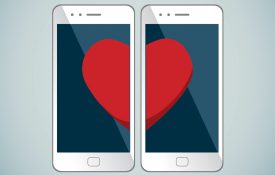-
How to Reconcile with a Romantic Partner
We’ve all done it: forgotten an anniversary, left a mess in the kitchen, said something unkind about our in-laws, or offended our partners in some other way, even if unintentionally. To get out of the
-
The data show that how we connect with romantic partners changes as we age
If you’re in your 20s or 30s and feel insecure in your relationship, you’re not alone. The good news: it’s likely that things will get better, according to data gathered about people’s attachment styles in
-
Romance Research Roundup
The inner workings of our hearts may always remain a partial mystery, but psychological scientists are on the forefront of what makes love, sex, romance, and attachment so alluring to human beings. This Valentine’s Day, the Observer shares some of the field’s most recent findings on the science of attraction.
-

The Bias Beneath: Two Decades of Measuring Implicit Associations
Since its debut in 1998, an online test has allowed people to discover prejudices that lurk beneath their awareness — attitudes that researchers wouldn’t be able to identify through participant self-reports. The Observer examines the findings generated by the Implicit Association Test over the past 20 years.
-

Oxytocin May Put ‘Rose-Colored Glasses’ On Relationships
Oxytocin levels may influence whether our partner’s words sweep us off our feet or leave us wanting.
-

Romantic Matches Are Hard to Predict Before People Meet
Researchers could predict speed daters’ desire and desirability, but not which two people would ‘click.’

